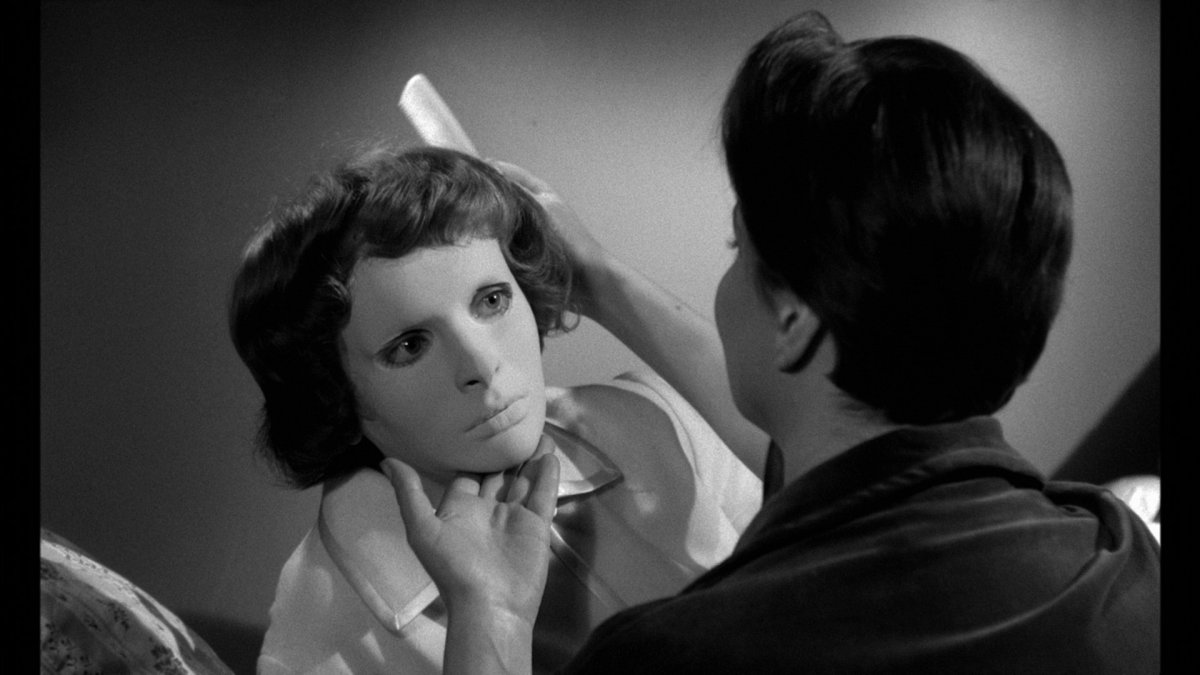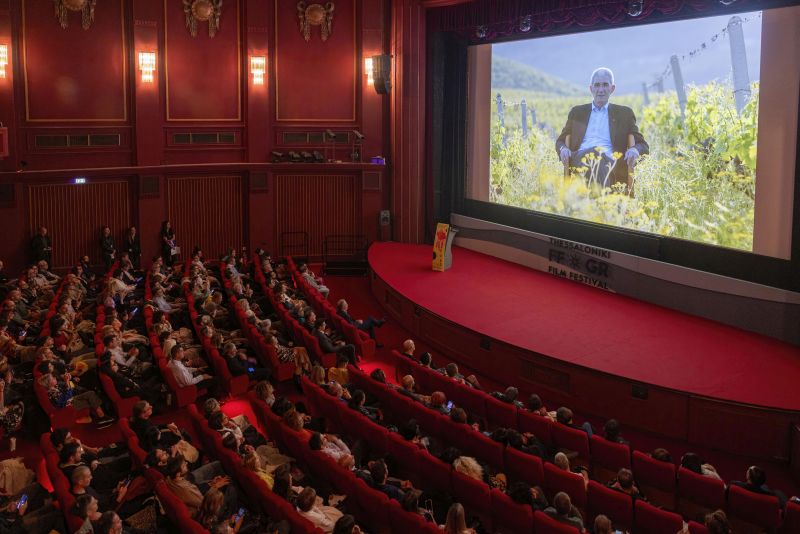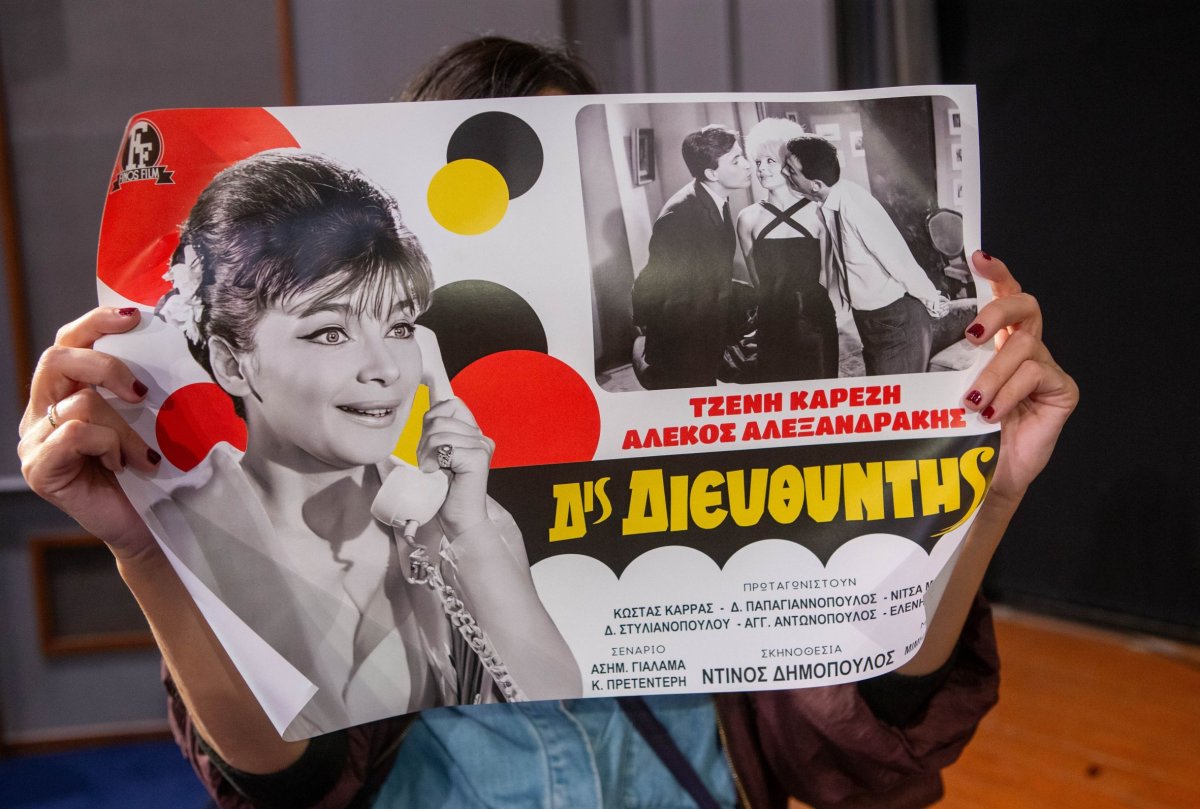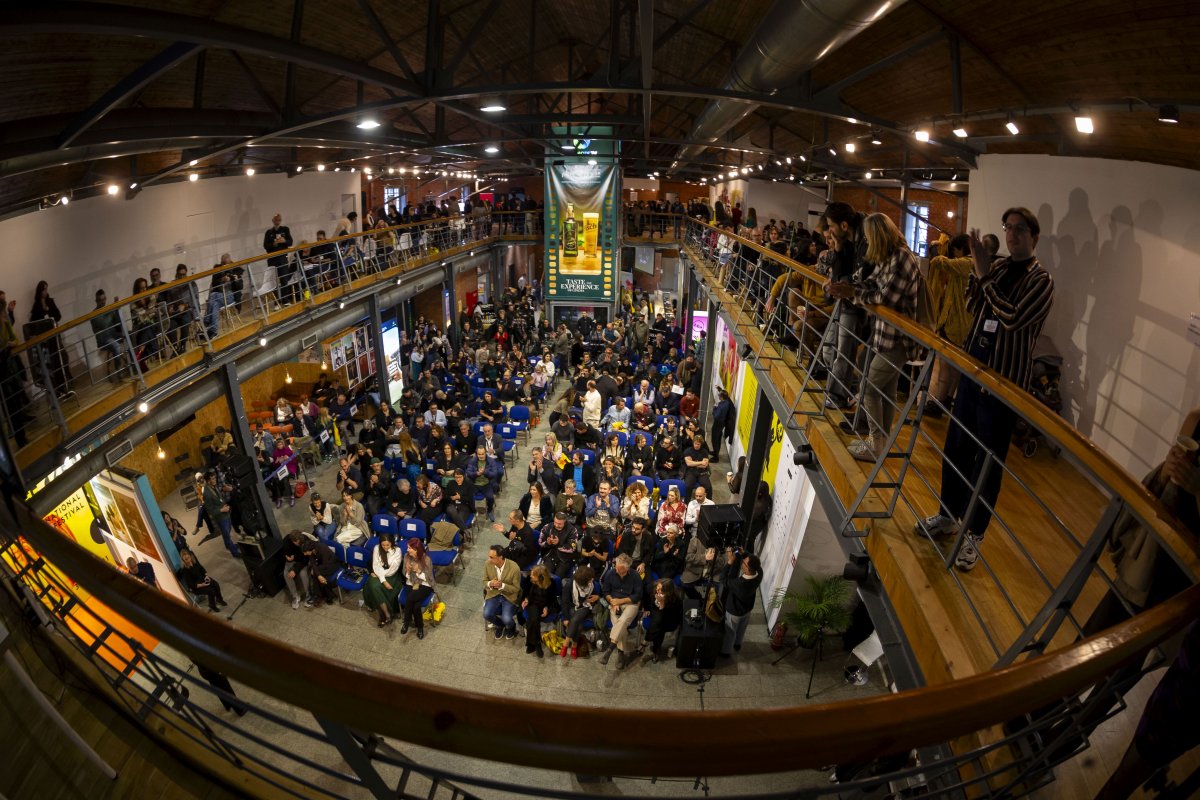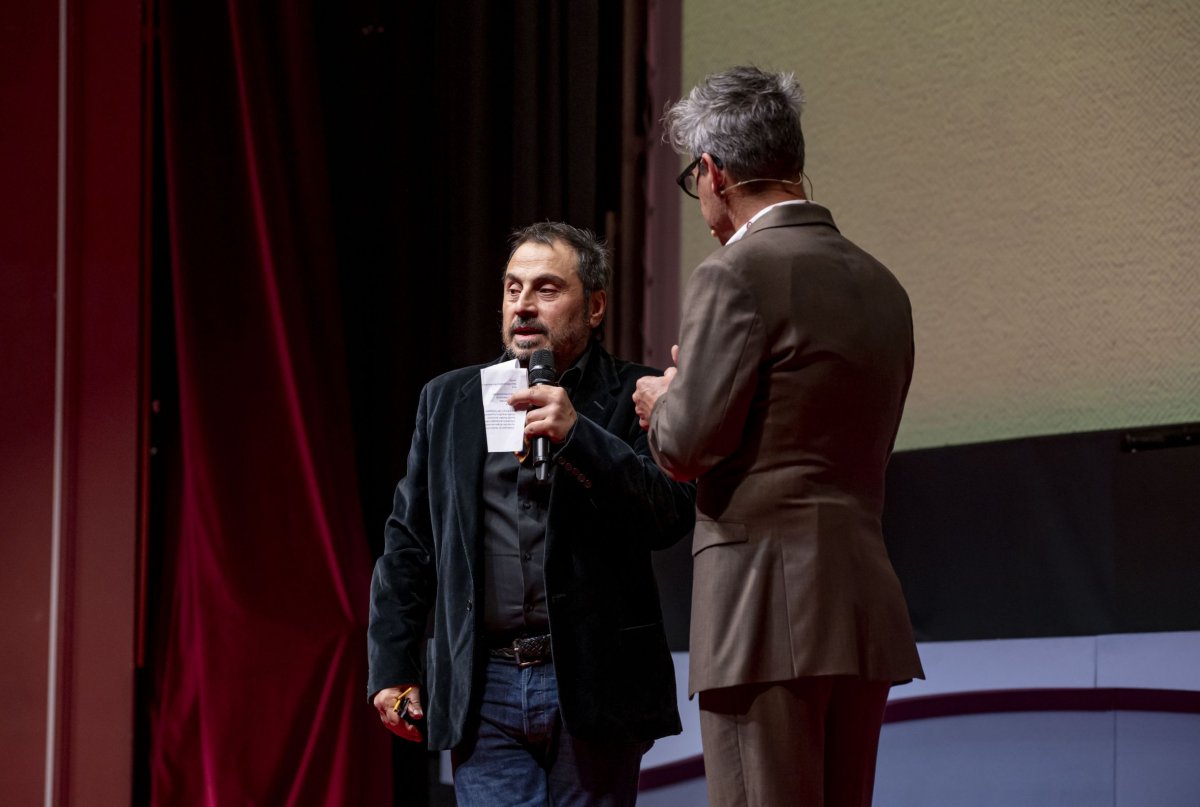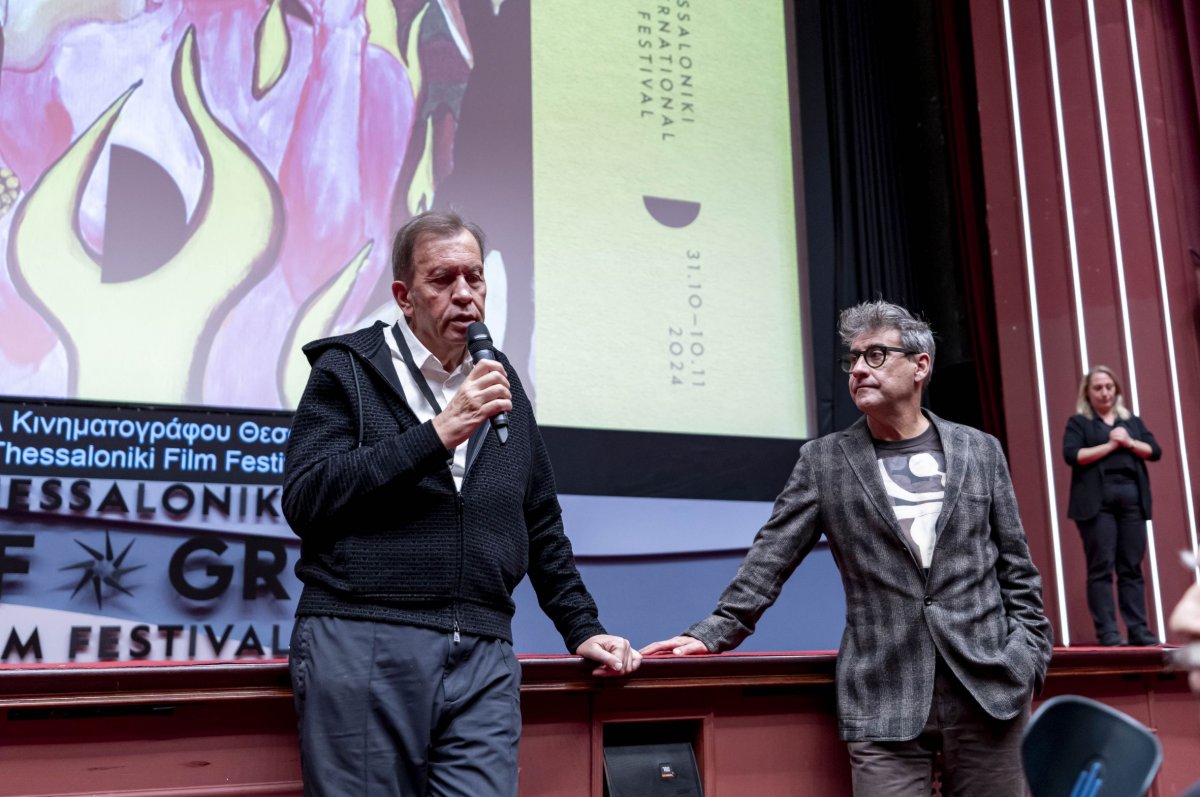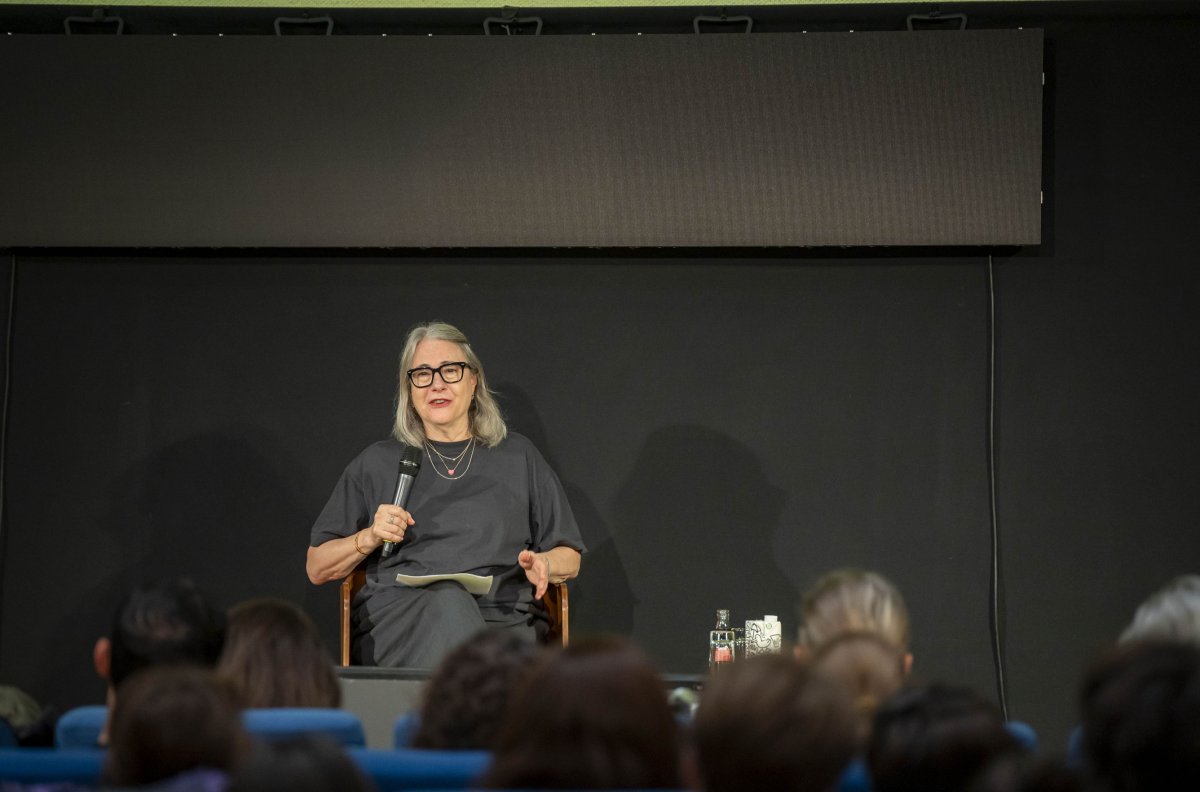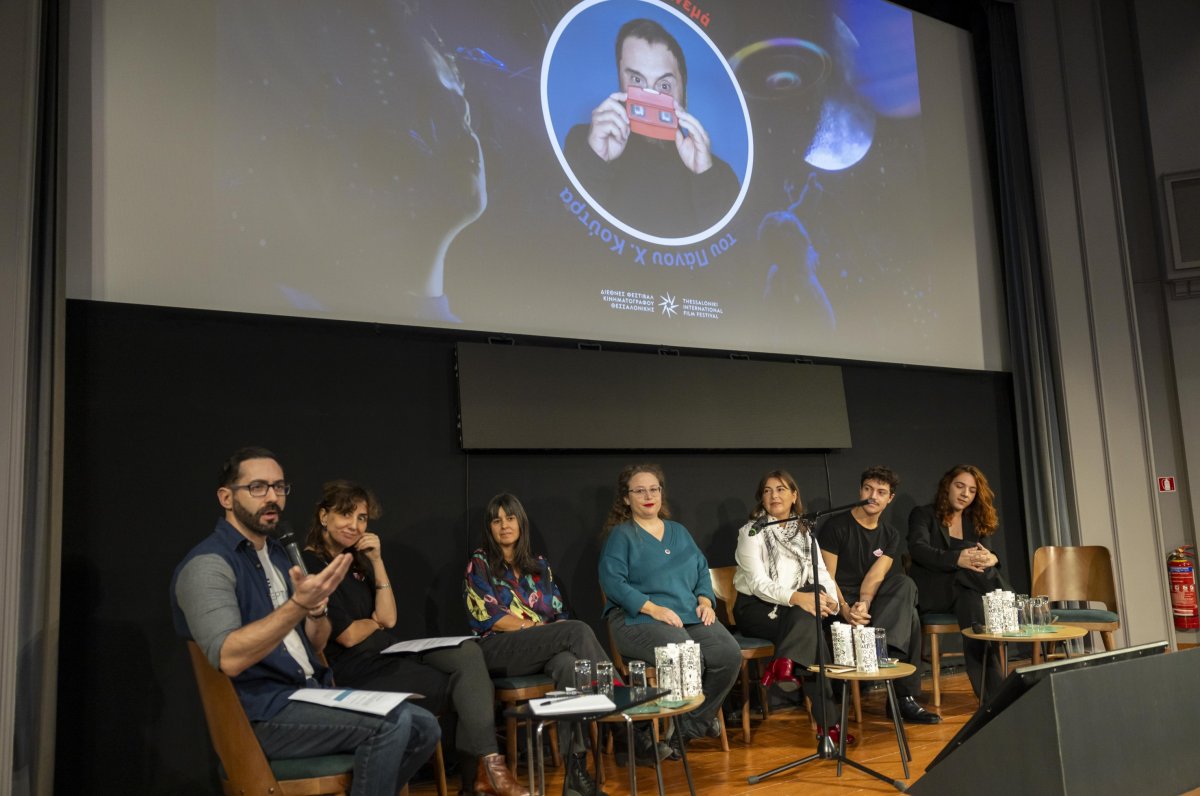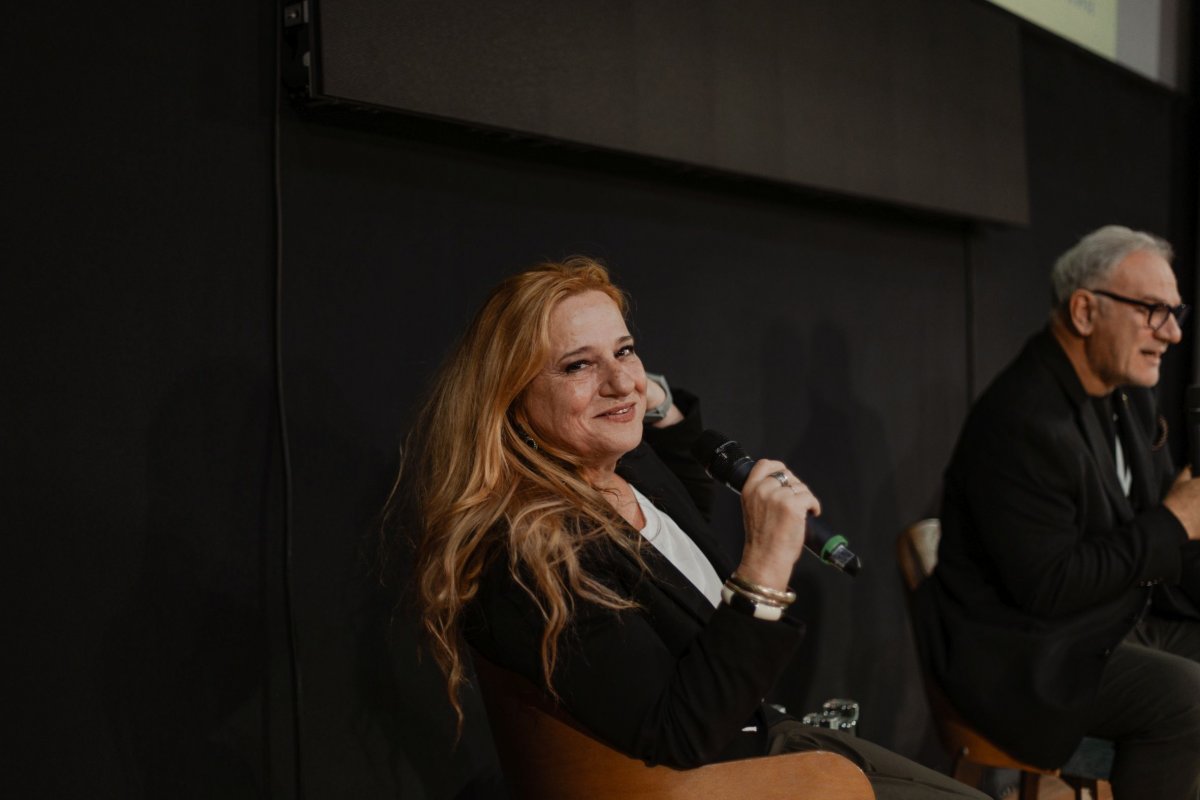Strange and mysterious creatures, monsters that live next to and within us, are featured in the big tribute of the 65th Thessaloniki International Film Festival (October 31st to November 10th, 2024), titled We, the Monster, which continues and enhances last year’s tribute FANT SM S. The tribute is curated by the internationally renowned Carlo Chatrian, former Artistic Director of the Berlin and Locarno Film Festivals, film critic, writer and programmer. The audience will have the opportunity to watch more than 20 masterpieces of world cinema, which explore and run through the complex and fascinating symbolisms and riddles that hide in all kinds of monsters.
Monsters were born almost simultaneously with storytelling, the creation of narrative and the universal and timeless need to give shape and form to our fears, in order to cope with them and face them, and over the centuries they served as a source of inspiration for countless stories of horror, love and acceptance. Gradually, as Western societies acquired structures and regulations, trying to tame the unspoken and the incomprehensible, monsters were banished from the organized frame of society. The era in which gods and demons, mortals and myths, humans and monsters co-existed, was now gone. The monsters returned to their dark womb, to primeval nature: they inhabited the forests and mountains, the depths of caves and the bottom of the sea. And the danger that this unseen force and this forbidden presence began to pose, acquired almost inevitably an irresistible allure.
Monsters were used from the very beginning as a symbol in literature and painting, most of the time in order to express the unknown, the unfamiliar, the gaze of otherness. Cinema soon followed.
“Giving shape and body to fears and desires, the monster touches upon the very quintessence of cinema. When we think of exceptional, unique, unforgettable images, it is not towards the perfection of beauty that we turn. Films are at the same time an open window into the unknown and a deforming but profoundly accurate mirror of our inner nature. Often shown as the “enemy”, monsters have just as often become a lens through which we can grasp the otherness of our societies, the monstrosity that dwells within each one of us and the natural impulse to understand and accept what is different", says Carlo Chatrian.
In the films of the tribute, we find monsters of history and politics that wrote some of the darkest pages in the book of the 20th century, monsters invisible and imaginary that reflect the most inexplicable and extreme behaviors of the human psyche. “The monster appears increasingly as an inverted image of ourselves. As populism, extreme political choices and hostility lead to monstrosities, we are horrified to find that the monster does not dwell only in the imaginary world out there, but also within us, and that with our participation, tolerance or silence we can also become monsters, as composer Manos Hadjidakis wisely foretold [When you get accustomed to the monster, you start to look alike]” stresses the Artistic Director of the Thessaloniki Film Festival, Orestis Andreadakis, while Carlo Chatrian mentions that with this special tribute “we have tried to expand the notion of the monster: by selecting films that question the idea of “normality”, we hope to contribute to the political debate that is at the heart of our “pluralistic” societies".
The long-established bilingual special thematic edition of the Festival is connected to the large tribute of this year's Festival and will include texts and analyses by cinema theorists, sociologists and journalists. The edition includes essays from the Swiss writer and former editor-in-chief of Le Monde diplomatique Mona Chollet, the professor in the Department of Political Sciences of the AUTh Nicolas Sevastakis, Orestis Andreadakis and the Festival’s Publications Coordinator Geli Mademli. It also features an editorial text by Carlo Chatrian and a presentation of the films.
The theme of the tribute also inspires the central exhibition of this year’s edition. The Festival commissioned works from two artists, Malvina Panagiotidi and David Sampethai, which will engage in dialogue with each other and will be presented at the MOMus- Experimental Center for the Arts, curated by Orestis Andreadakis. The exhibition will take place during the 65th Thessaloniki International Film Festival, with free admission for the public, while the opening will take place on Saturday November 2nd, at 6pm.
Discover the films of the tribute:
For his legendary Freaks (1932), Tod Browning drew inspiration from his own life experiences – at the age of 16, he ran away from a deeply unhappy life with his family to join a traveling circus that toured the entire country, working as a clown and vaudeville performer for 13 years before turning his attentions to cinema. The film’s plot weaves through the backstage workings of a traveling circus where most of the performers have some kind of congenital deformity. Cleopatra, a beautiful acrobat, tries to seduce Hans, a member of the troupe with dwarfism, in order to swipe his large inheritance. Her plans, however, run into many unexpected obstacles. A latent and dark allegory tackling the period of the Great Depression, class prejudice, and racism in the USA, a veritable societal bombshell for the mores of its time (and beyond), and a scathing indictment of both the abhorrent theories espoused by eugenics and deeply-rooted notions we all hold when it comes to what is considered “normal,” Freaks stands –even today, even in its abridged form given that the original 90-minute cut has been lost forever– as a monument to daring and originality, as a hymn to deviating from stifling norms, but above all as one of the most sui generis horror films ever made.
In Georges Franju’s Eyes Without a Face (1960), the surgeon Dr. Génessier –wracked with guilt for the disfigurement of his daughter’s face during a car accident where he was driving– devises a diabolical plan. With the help of Louise, his loyal assistant, he kidnaps beautiful young women in order to steal their faces and surgically graft them onto his daughter, who is forced to wear a terrifying porcelain mask in the meantime. As these disappearances of young women gradually mount, the police nose out the root of this evildoing and close in on the desperate doctor. Eyes Without a Face, which signaled Franju’s definitive shift from the documentary form to fiction features, elicited extreme reactions from audiences at its first screenings; the film would of course go on to influence such major directors as Pedro Almodóvar, John Carpenter, and John Woo, and also inspired Billy Idol to write a hit song that shared its title. An ingenious take on the Frankenstein myth, as well as a stunning homage to the tenets of German expressionism, Franju’s film delineates an electrifying treatise on the fluid notion of identity, on the fear of death, and on the slippery vanity of beauty, while also serving as a metaphor for the constructs and illusory semblances of cinema.
Today, just over a century after the March on Rome (Marcia su Roma) ventured by the Blackshirt paramilitaries of Benito Mussolini that led to his National Fascist Party taking power, the documentary feature To Arms, We’re Fascists! (1962) –made by Cecilia Mangini and Lino Del Fra (partners both in life and in filmmaking), together with the film critic and historian Lino Miccichè– stands as a reminder and a warning that remains formidable and ominous. The film unfurls half a century of Italian history, from the jubilee through to the centenary of the unification of Italy, using rare and invaluable archival materials. Taking in everything from the invasion of Libya to the Treaty of Versailles and from the horrors of the fascist dictatorship to the partisan Resistance and the unrest of the post-war period before culminating in the Reggio Emilia massacre of July 1960, this sensational odyssey dissects historical memory and the lingering traumas of the past as experienced by Greece’s close neighbor. In its painful denouement, the film poses a dark question that remains pertinent today, one that harbors within it the most difficult of answers: are we in fact done with fascism?
In Claude Chabrol’s Landru/Bluebeard (1963), we are confronted with one of the most constant philosophical-existential themes in the great French director’s filmography: the fog and opacity that cloak the human impulse towards violence and evil. The eponymous hero, a bourgeois dandy, repulsive yet charming at the same time, repeatedly puts into practice an evil plan to ensure a comfortable life: he seduces and murders middle-aged women after persuading them to give him access to their bank savings. Deliberately leaving the crimes out of frame and placing detailed emphasis on the painstaking preparations, shockingly stripped of all emotion, Chabrol weaves a chilling parable about the slaughterhouse of the First World War, patriarchal authority, and the generalized greed of a society of self-isolation and self-interest. At the same time, he builds an unconscious bridge between the two main periods of his work, providing a smooth transition from the New Wave to the era of psychological thrillers.
When one of the most astonishing dystopian novels in the history of literature encountered the directorial eye of a figure who left an indelible mark on 20th-century theater, the results were bound –beyond all doubt– to be phenomenal. In Peter Brook’s Lord of the Flies (1963), a film based on the book of the same title (1954) written by the Nobel laureate William Golding, a group of young boys are marooned on a desert island following a plane crash. The young castaways attempt to establish a microcosm of organized society, assigning roles and conferring positions of power with a view to ensuring their survival. Their plans for democracy and order soon collapse, however, like a house of cards, sparking a chain reaction of violent outbursts and savagery. The film –freely adapted by Brook from his own renowned theater production of the work– explores the darkest of human instincts that burst forth whenever given the space and chance, as well as our underlying proclivities for disorder and chaos, and how easy it ever is to give in to the temptation of barbarity, sweeping audiences down a steep and slippery slope that leads from hope down into disaster.
With a budget of barely $100,000 and grossing over $12 million in the US and $18 million worldwide, George Romero’s Night of the Living Dead (1968) sparked a genuine revolution in the horror film genre, giving zombies a prominent place in the underground culture of a whole era. Shot guerrilla style, Romero’s film is rife with socio-political references, serving as a subliminal, chilling allegory for the turbulent 1960s in the US. Deep-rooted racism, the horror of a nuclear Armageddon, the stifling conservatism of the American nuclear family, and the turmoil that accompanied a period of radical change in the underbelly of American society are just some of the themes that emerge in a plot with multiple layers of meaning and references. Placing the viewer in medias res of an outrageous situation that comes out of nowhere, with hordes of undead corpses spreading terror across rural Pennsylvania, Night of the Living Dead caused a huge uproar due to its shockingly violent and profane images (such as parents being cannibalized), while it has become established over time as an inexhaustible reference point for horror cinema and the gore aesthetic.
Tonia Marketaki’s explosive directorial debut titled John the Violent (1973) –inspired by true events that came to pass in Greece during the troubled 1960s– is a pioneering courtroom drama (and not just by Greek standards): the film stirs up traces and fragments of various truths and, in doing so, proves that the act of seeking out a single, solitary truth is nothing but a wild goose chase. Ioánnis Zákhos (the John of the title), a disturbed young man who is psycho-sexually unbalanced, lives out his erotic fantasies through a kind of sanctifying violence; in this sick way, he strives to fill the gaps left by the lack of manhood and lack of respect he feels. Once arrested, he confesses to his crimes, much to the relief of the police, whom the press have accused of being inept. This in-depth exploration of the innate theatricality stowed inside every attempt to serve justice and re-enact a crime, Marketaki’s film dissects a series of implacable clashes (society vs the individual, the spirit of the law vs the letter of the law) and, in the process, paints a stifling and sinister portrait of an entire period. The film is to be given a universally accessible screening at the 65th Thessaloniki International Film Festival with the support of Alpha Bank, the Festival’s Accessibility Sponsor.
The Big Feast (1973), directed by Marco Ferreri, invites us to witness the most outrageous and debauched meal that cinema has ever seen in this vitriolic political satire that mercilessly lambasts the greed, consumerism, and spiritual estrangement of the urban elite. Above all, by making masterful use of food as both a symbol and an extension of an increasingly bestial humanity, the film brings the unspoken and innate desire for self-annihilation that plagues people in the modern day firmly to the fore. Four successful middle-aged men –who reflect key pillars of the transformation seen in the post-war European landscape and are played by four giants of the silver screen (Marcello Mastroianni, Michel Piccoli, Philippe Noiret, and Ugo Tognazzi)– go to stay at a villa one of them owns, where they set out on a journey of self-knowledge and self-punishment from which there is no return, determined as they are to see things through, right to the very end. Performing a tawdry suicidal ritual in which food is transformed into an instrument of lethal self-harm, they sweep us off on a binge-eating cinematic epic, on an unprecedented exercise in gluttony and immoderation that shocked critics and audiences alike, dividing opinion at the Cannes Film Festival in 1973.
Walerian Borowczyk’s The Beast (1975) makes its intentions clear right from the very start, setting aside all decorum, any inhibition, every taboo. The head of a noble family in dire financial straits thinks his luck has changed when Lucy, the daughter of a wealthy businessman, agrees –for reasons of her own– to marry his son, who has physical deformities and mental disabilities. However, almost immediately after the two families first meet, and as a series of illicit fantasies strike Lucy in her dreams (are they dreams?), dark secrets of the aristocracy quickly become one with primal legends, melding the dream world with reality. Sex scenes that caused a stir, eliciting embarrassment and shock, while also beating a path for films such as Andrzej Żuławski’s Possession; an ingenious mix of gothic lore and French erotic farce; unstinting scorn for the repression of carnal desire, for stifling run-of-the-mill morality, and for the hypocrisy inherent in propriety – these are just some of the distinctions meriting a film that never fails (and never will fail) to provoke, and to trigger a reaction.
When David Lynch made his debut with the extremely experimental and utterly unconventional Eraserhead, few could have foreseen that the same director would reach and win over broader audiences with his second feature, even making it all the way to the Oscars. The Elephant Man (1980), with its charismatic cast (featuring Anthony Hopkins, John Hurt, Anne Bancroft, and Wendy Hiller) and its immersive black-and-white cinematography by the great Freddie Francis, would garner eight Oscar nominations (also prompting the Academy to introduce an Oscar for Best Makeup the following year) and went on to triumph at the Baftas and win a César Award for Best Foreign Film. Drawing inspiration from the incredible true story of Joseph Merrick, David Lynch presents a tale marked with compassion and the acceptance of difference, reminding us all that there is nothing more monstrous than a (high) society that enjoys freak shows without shame, yet never plucks up the courage to look at its own inner monsters in the mirror.
The Fly (1986) is an entertaining patchwork that stitches together all the alluring delights to be found in the cinema of David Cronenberg, combining science fiction, the body horror sub-genre, and romantic drama with a dystopian future. While trying to perfect his experiments in the teleportation of matter, the physicist Seth Brundle meets the journalist Ronnie Quaife. The pair become lovers and Veronica starts observing the scientific work being conducted by Seth, who decides to use himself as a human guinea pig. A fleeting moment of bad luck, however, results in his gradual genetic transformation into an enormous fly, with inexorable consequences. This theme of transformation –perhaps the most steadfast touchstone of Cronenberg’s oeuvre, with all its countless allegorical ramifications– here becomes the vehicle for a thrilling metaphor that touches on senescence, mortality, the inevitability of death, the elusiveness of love, and the underlying essence of the human condition in a film that unfurls like a Kafkaesque dream – without some clear beginning, but with a most certain end.
The well-worn flattering labels “low-budget film” and “independent film” seem to pale before Tetsuo: The Iron Man (1989), Shinya Tsukamoto’s delirious directorial feature debut, a film that has secured its place in the cult-exploitation pantheon in perpetuity. In one of the most outrageous science-fiction plots ever encountered, a young metal fetishist, in a state of frenzy from the self-inflicted wound he has made to implant a metal plate in his thigh, is the victim of a hit-and-run accident. The driver of the car gradually undergoes a painful and mysterious transformation during which human flesh is replaced by scrap metal, while he is overwhelmed by sexual fantasies involving bizarre metallic beings. Riding the wave of cyberpunk that had made a splash in 1980s pop culture, Tetsuo – the lovechild of Ridley Scott’s Blade Runner and David Cronenberg’s Videodrome, according to the director himself – plays with chaos and destruction, mercilessly satirizes both white-collar discipline and Japan’s modern economic miracle, and takes us on a journey down the most unholy paths of erotic attraction.
Visual artist, photographer, multimedia artist, and filmmaker Tracey Moffatt is perhaps the most influential and versatile voice in the Aboriginal art world, while her works and exhibitions have been hosted by institutions such as the Tate and the Los Angeles Museum of Contemporary Art. In beDevil (1993), the first film directed by an Aboriginal woman, three stories unfold in which the metaphysical element, the imperceptible dividing line between the visible and the uncanny, and the eternal return to one’s roots predominate. Rick, an Aboriginal boy living near a swamp, is haunted by the nightmarish image of an American GI who drowned in the quicksand. Ruby (played by Moffatt herself) and her family live in a house next to abandoned railroad tracks, where ghosts can be seen strolling around. A landlord finds it difficult to evict the tenants of an old warehouse – a couple who have been dead for years. The contemporary reality of a vast country full of wonders and traumas, the painful colonial past, the open wounds of history, the legends and beliefs of a wild and isolated place come together in a mystical and hallucinatory creation.
In Peppermint Candy (1999), his sophomore feature film, Lee Chang-dong weaves an elaborate narrative that moves backwards in time, sketching a bleak portrait of the dramatic events that took place in South Korea over the last twenty years of the 20th century. Divided in an exemplary manner into seven chapters of escalating tension, Peppermint Candy traces the prescribed course of dehumanization and destruction of Young-ho, a (once) romantic young student who dreamed of becoming a photographer. The military dictatorship and the bloody Gwangju Uprising in the early 1980s, the lack of freedom and the repression that marked Korean society in the following years, the violent economic transformation and the Asian financial crisis of 1997 are refracted through the story of a common man who found himself trapped between forces that surpassed him. The ever-open wounds of the past, personal stories crushed under the weight of history, guilt that cannot find refuge in oblivion and the irrevocable loss of innocence bring to the surface the most relentless monster that lurks out there: a life wasted, love that slipped away, time that was irretrievably lost.
The 350 hours of priceless archival footage from the trial of Adolf Eichmann in Jerusalem in 1961, and Hannah Arendt’s famous book Eichmann in Jerusalem – A Report on the Banality of Evil (1963) are the building blocks of the shocking film The Specialist, Portrait of a Modern Criminal (1999) by Eyal Sivan, which paints the chilling portrait of a ruthless bureaucrat who seems to have sprung from the darkest Kafkaesque nightmare. Adolf Eichmann, also known as “the Architect of the Holocaust”, was living proof that sometimes monsters don’t have curved claws, sharp teeth, and a terrifying visage. On the contrary, they look, act, move, and talk like perfectly ordinary people next door, seemingly incapable of committing any evil, performing with unparalleled zeal and responsibility whatever task they are assigned: even the mass and inhuman extermination of millions of people, in the most heinous crime in modern human history.
Hayao Miyazaki’s Spirited Away (2001) was the biggest hit in Japanese box office history for almost twenty years, became the first non-English language animation to win an Oscar for Best Animated Feature, and, above all, was the film that first brought Western audiences so close to the magic of Studio Ghibli. Ten-year-old Chihiro is trapped in a parallel dimension where spirits, ghosts, and mysterious creatures reign supreme, while her parents have been transformed into pigs in an eerie abandoned amusement park. In Spirited Away, the distinction between the visible and the invisible, the body and the spirit, the tangible and the intangible is almost as if it never existed, freeing contact with the uncanny and the otherworldly from any inherently malevolent dimension. Somehow, this explosion of colors and rhythms initiates us into a process of maturation that is identified with self-knowledge and improvement rather than didactic rules and forced atonement for old mistakes. In this way, even the most repulsive monster may conceal within itself infinite beauty, having fallen victim to human greed and indifference. In Miyazaki’s world, what scares you makes you stronger: because it teaches you how to love even your innermost fears.
United Red Army (2007) by Kōji Wakamatsu takes right to the heart of a turbulent period for Japanese society, reconstructing a series of dramatic true events that took place in the 1960s and the 1970s. Divided into three chapters, the film follows the course of the titular student fringe group, from the idealistic militancy and the military-type training, all the way to the moral downfall and the bloodstained inner settling of differences, up to the final act of a predetermined tragedy that unravels like a self-fulfilled prophecy. Intertwining archival footage, voice-over commentary and fiction, Wakamatsu outlines a story of decay and demystification, where the most horrendous monsters lie beneath the purest of intentions, while depicting the numbness and the emotional breakdown of an entire country.
Welcome to Where the Wild Things Are (2009), a world inaccessible to the mundane eyes of adulthood and hospitable to the adventurous journey of childhood, its ultimate destination being the elusive coming of age. There, Max will find refuge: a wounded nine-year-old boy who feels rejected by his family and is seeking his place on the great stage of life that opens up before him. An adaptation of the famous children’s book of the same name by Maurice Sendak (the film rights to which were bought by Walt Disney back in the 1980s), and an exciting mix of live-action, animatronics, and CGI effects, Spike Jonze’s film combines the tenderness of a lost paradise with the painful realization that nothing can remain untarnished by life itself, departing from the usual expectations of a children’s story. This time, it’s the monsters who need the guidance and encouragement that only a child can provide.
With an opening scene like a blasphemous homage to Fellini’s Dolce Vita and a delightful deadpan humor that automatically brings Aki Kaurismäki to mind, born provocateur Bruno Dumont innovates without straying from his basic philosophical course. P'tit Quinquin (2014), which premiered at Cannes as a 205-minute film but ended up being shown on French television as a four-episode miniseries (as will also be the case at TIFF65), topped the list of best films of 2014 and came third in the top films of the past decade for the iconic Cahiers du Cinéma magazine. In the familiar setting of Dumont’s filmography, rural northern France, the body of a murdered woman is found stuffed inside a dead cow. A bumbling, grumpy inspector undertakes to solve the curious case, with little Quinquin, a loud-mouthed boy prone to racist outbursts, constantly getting underfoot. Firmly committed to the themes of latent violence, apathy towards evil, and the disenchantment of death, Dumont wonders for the umpteenth time if the devil lives among us – only this time he phrases the question in an irresistibly entertaining way. And for the first time he leaves a chink of optimism: if these two dysfunctional heroes know what to do when faced with the monster, then there is indeed hope for us all.
The Devil’s Bath (2024), by the Austrian directorial duo Veronica Franz and Severin Fiala (Ulrich Seidl’s partner and nephew, respectively), fearlessly confronts the countless monsters that have held sway over European unwritten history for centuries. In mid-18th-century rural Austria, Agnes (played with a physical vigor bordering on spiritual methexis by Anja Plaschg, who also signs the film’s evocative soundtrack as Soap&Skin) sinks inexorably into the murky waters of depression and despair, gradually slipping into mindless violence. Against a mystical setting of gothic imagery, religious oppression, rigid dogmatism, mental illness, and institutionalized violence against women merge into a maze that leaves no room for escape.
One of the most daring and inventive examples of social satire we've seen in cinema in recent years, Bad Luck Banging or Looney Porn (2021) by Radu Jude, which won the Golden Bear at the Berlin Film Festival, is one of the first films to incorporate into its plot the dystopia we experienced during the Covid era, almost simultaneously with the outbreak of the pandemic. Emi, a history teacher at a prestigious school in Romania, sees her professional future hanging by a thread when her personal sex tape is leaked online. Having endured a grueling day, during which she has been confronted with countless sexist and racist attitudes as well as the awkward situations that have arisen due to Covid restrictions, Emi is called upon to defend herself before a group of outraged and reactionary parents in a process resembling a monstrous mockery of an Inquisition. Launching a direct assault on the viewer’s every conservative reflex and playing with the sense of the forbidden and the sacrilegious through interpolated episodes – sometimes sarcastic and sometimes outright provocative – that interrupt the main plot, Bad Luck Banging or Looney Porn reserves the most meta touch for its utterly crazy, completely unpredictable open-ended finale.
In Sasquatch Sunset (2024) by David and Nathan Zellner, two of the most idiosyncratic figures in contemporary American independent cinema, four sasquatch nomads wander the wilds of northern California for a year, hoping to meet other survivors of their kind, while struggling to make it in an ever-changing, filled with threats, environment. Based on the bigfoot myth, one of North America's most popular and timeless tales, the Zellner brothers map out an epic journey of survival and resilience, sometimes humorous and sometimes heartbreaking, in a film without dialogue, where the performances are based entirely on kinetic skills and non-verbal expressiveness. At the end of the journey, it becomes clear that the most threatening monsters are the ones our minds construct to cast away and ostracize anything they find incomprehensible and repulsive.
More about Carlo Chatrian
Carlo Chatrian (1971) has studied Literature and Philosophy at Torino University. He holds a degree in cinema, with an essay on Jacques Rivette.He has been programmer for Alba Film Festival, Festival dei Popoli and Visions du Réel. He held workshops with filmmakers such as Johan Van der Keuken, Frederick Wiseman, Errol Morris. He edited books on Nanni Moretti, Nicolas Philibert, Claire Simon. From 2003 to 2018 he worked at Locarno Festival, where he curated a special program on Japanese Animation and retrospectives on Ernst Lubitsch, Vincente Minnelli and Otto Preminger, before taking on the role of artistic director (2013 to 2018), hosting tribute to the French Nouvelle Vague and the cinema of West Germany. During six editions at Locarno, filmmakers such as Lav Diaz, Hong Sangsoo, Albert Serra, Wang Bing and actresses such as Brie Larson and Ariane Labed have been awarded and recognized. In June 2018, he was appointed artistic director at the Berlin International Film Festival, holding this post for five editions (2020/2024). Since June 2020, he has been a member of the Academy of Motion Pictures and Science.


